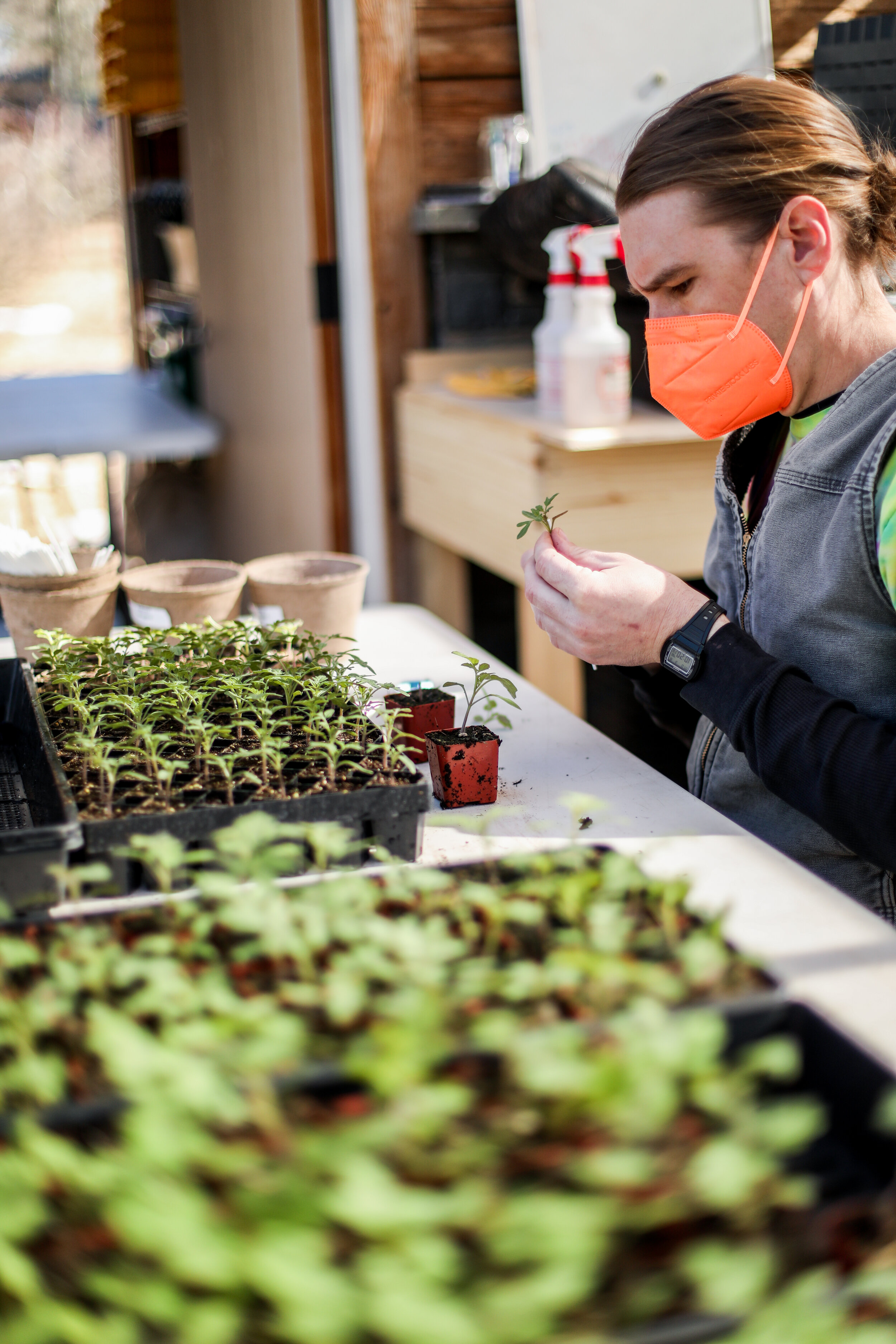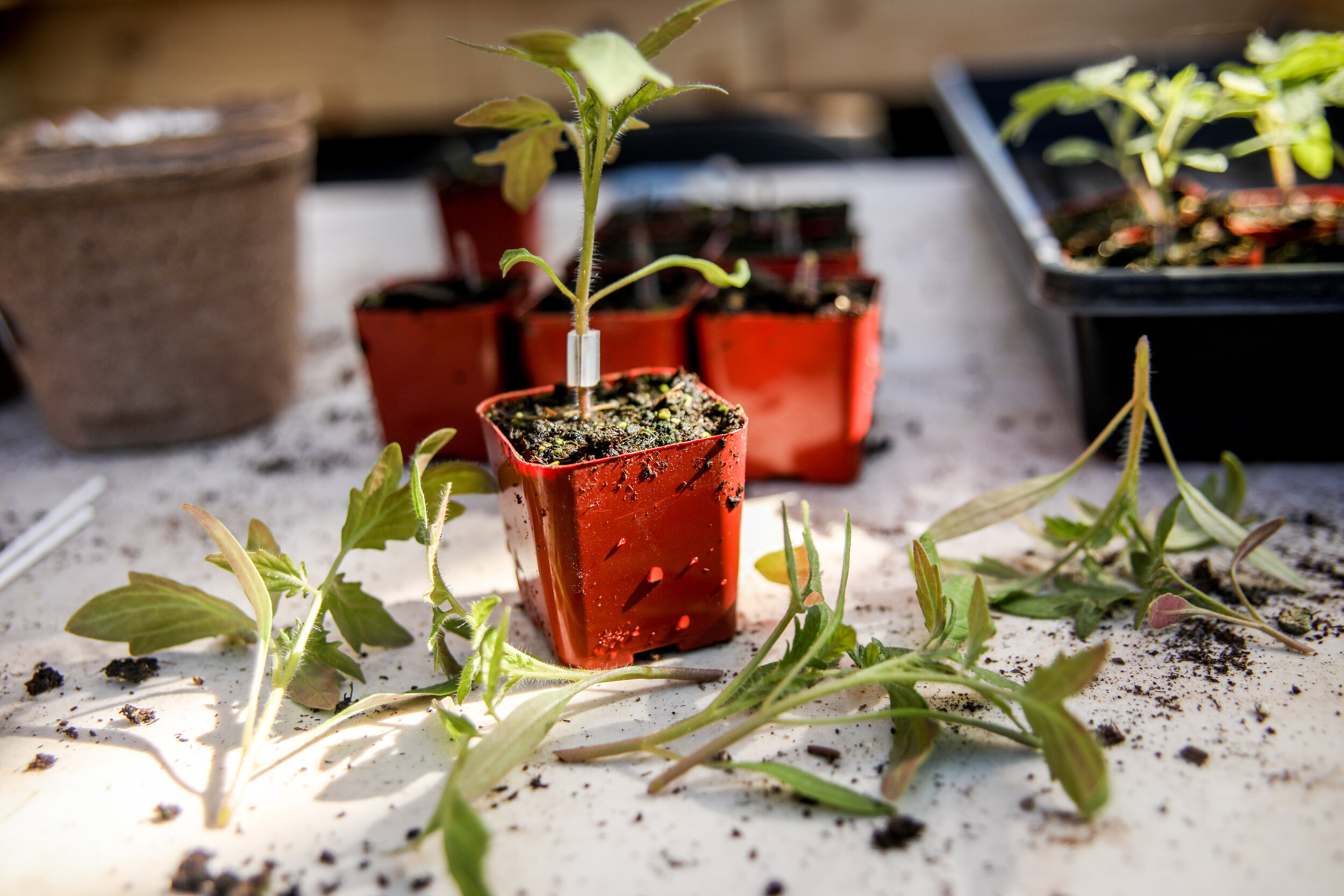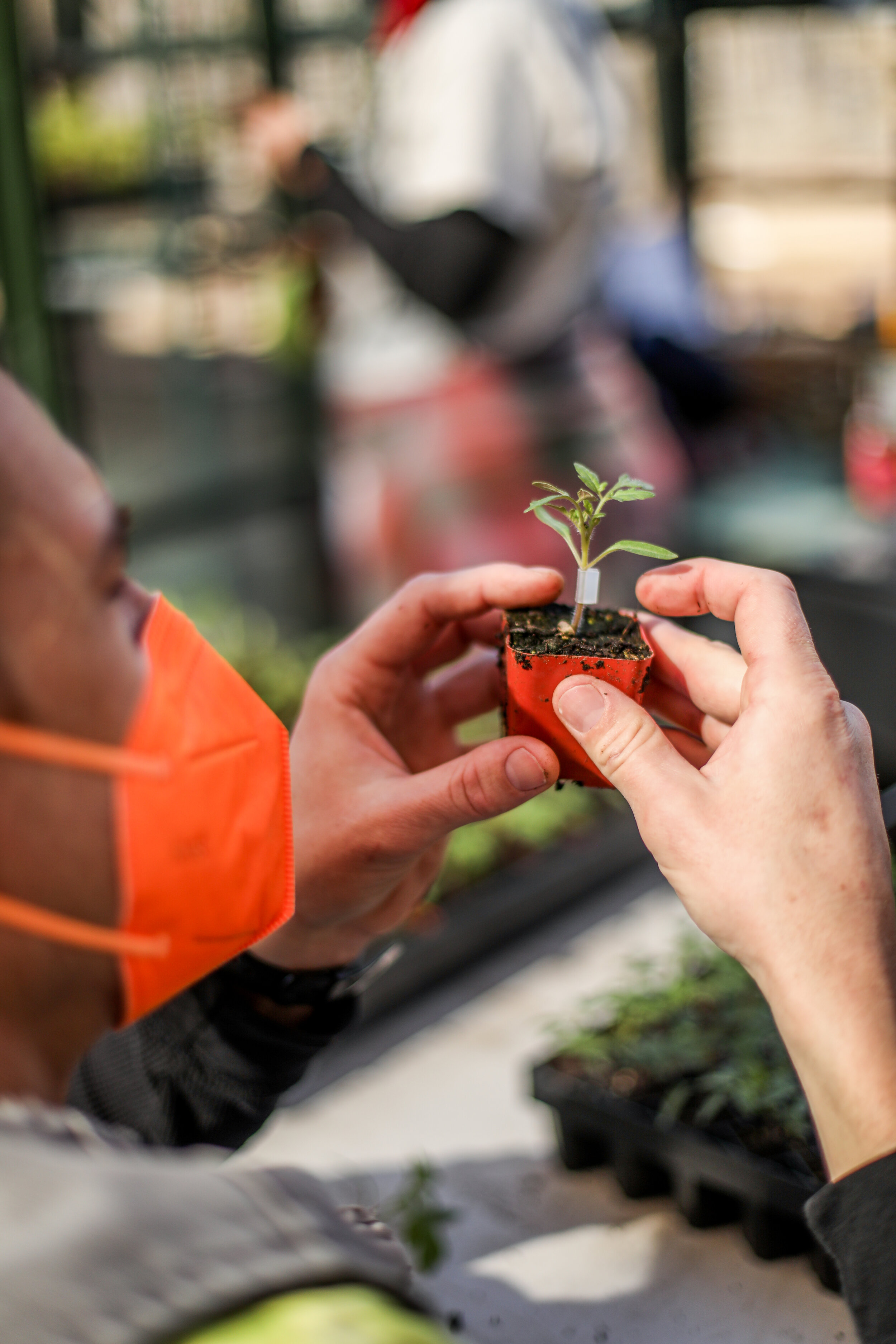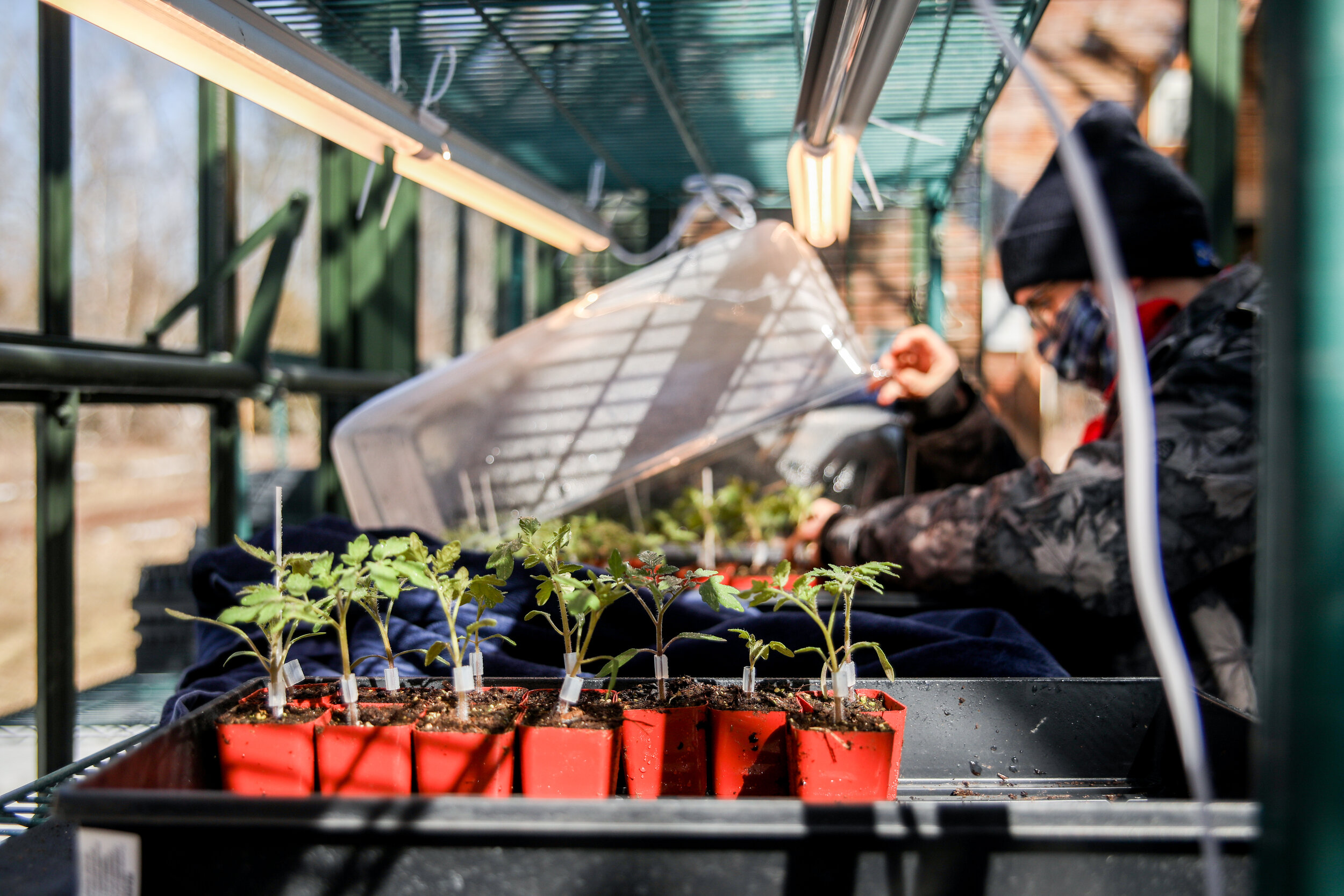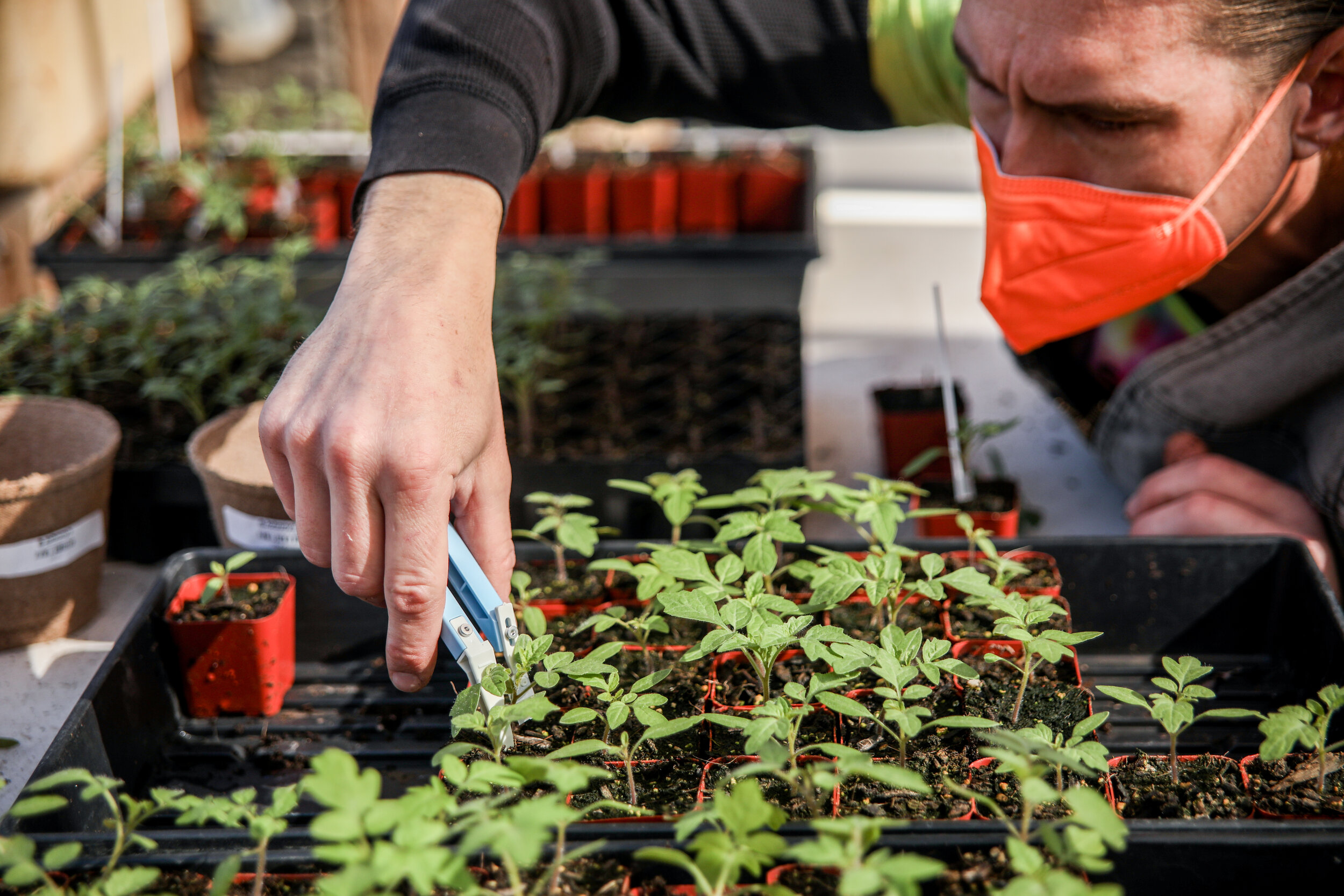The Art of Grafting: A Small Farm's Guide to Better Yields
At its core, grafting is the art of combining a scion (the upper portion of a plant) with a carefully selected rootstock. This age-old technique can dramatically improve your farming outcomes, offering an impressive 20-60% increase in yield – a game-changer for small-scale operations. While the benefits are substantial, your success will depend on various factors, including indoor versus outdoor growing conditions, soil quality, and weather patterns.
Many growers shy away from grafting, viewing it as a risky and time-consuming process. It's true – an unsuccessful graft can set your growing schedule back by more than a month, and even successful grafts add about two weeks to your date-to-maturity. However, on our small farm, we've found that the benefits of increased production, better yields, enhanced disease resistance, and adaptation to short growing seasons make it well worth the effort.
Rootstock varieties serve as the foundation for whatever crop you're looking to grow, from tomatoes and cucumbers to apples and lemons. In our case, we focus on tomatoes. The beauty of rootstock selection lies in its versatility – you can choose varieties bred for specific characteristics that match your growing conditions and production goals.
Some rootstocks are developed for their robust, vigorous root systems that excel at nutrient uptake, while others might prioritize disease resistance, drought tolerance, or extended bearing seasons. Here in upstate New York, where our growing season is notably short, we specifically select rootstocks with vigorous root systems capable of maximizing nutrient absorption in a limited timeframe.
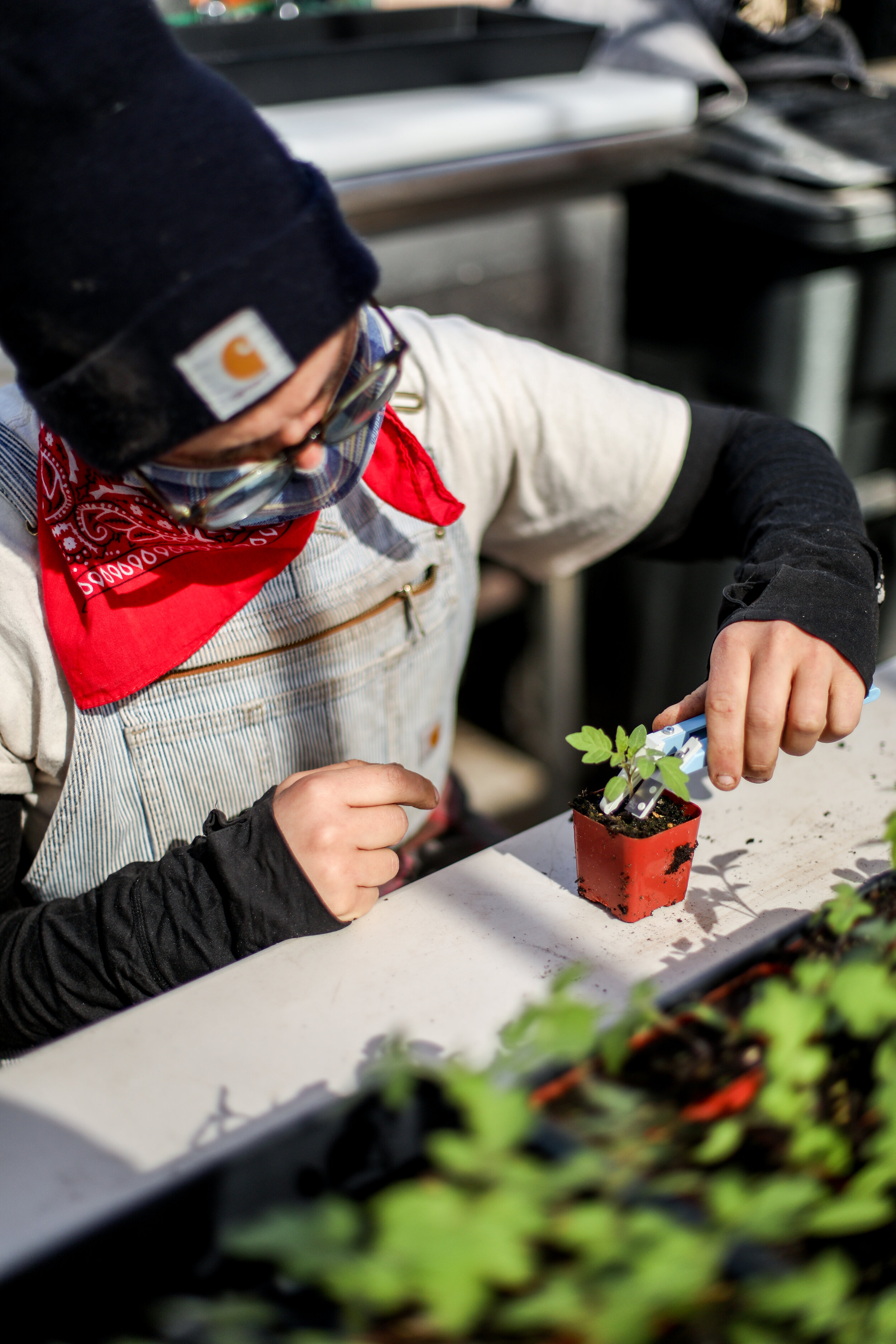

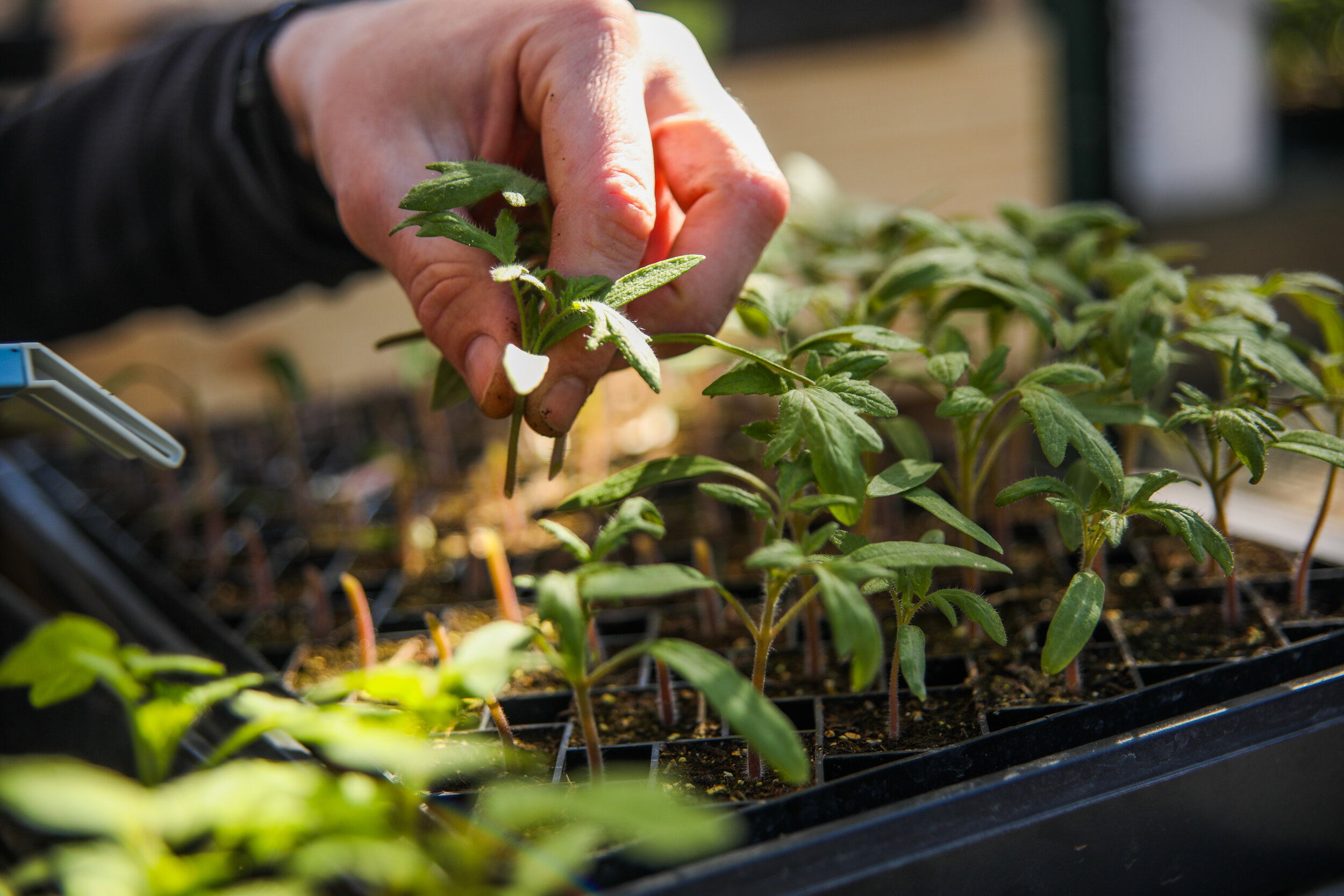
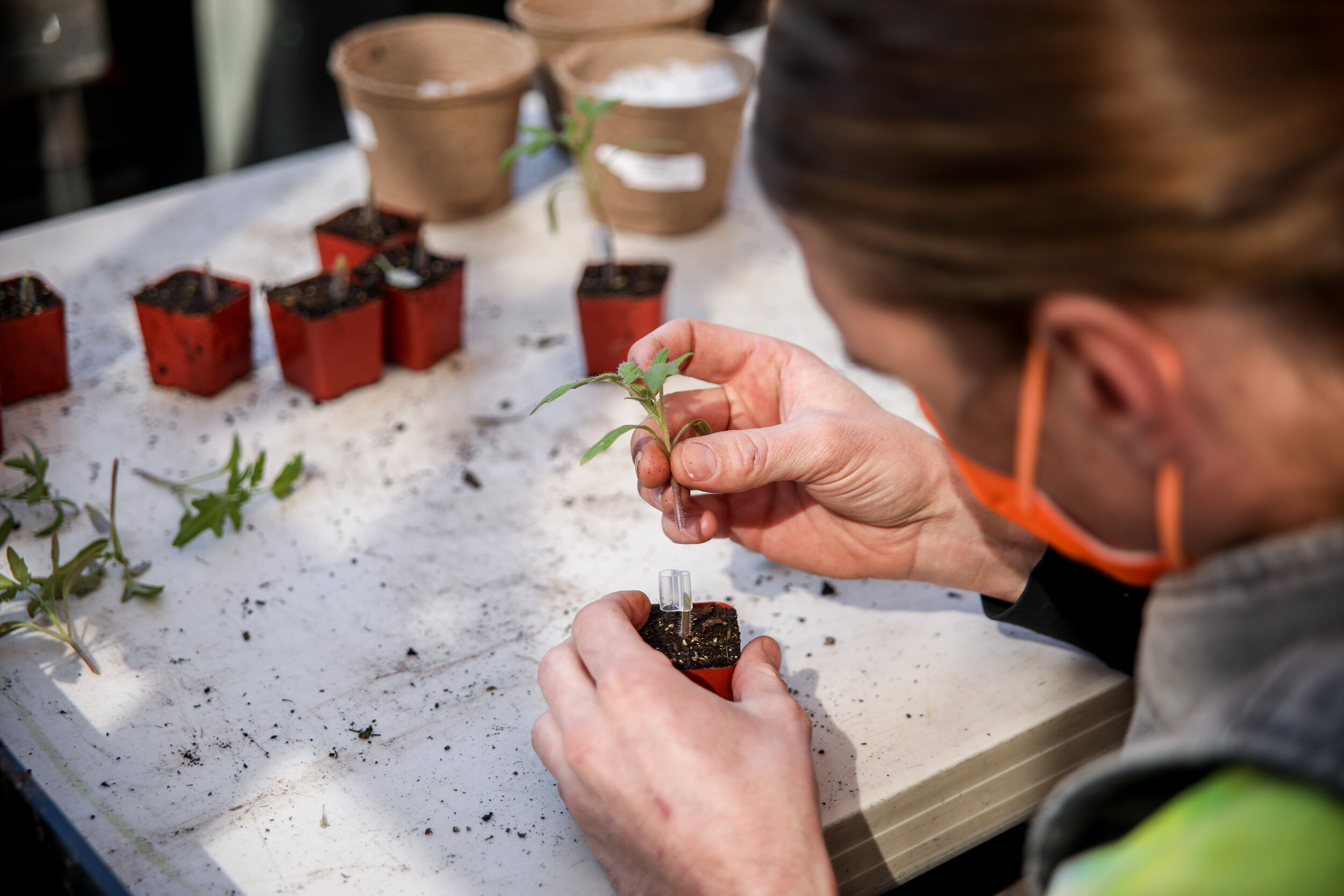
Step-by-Step Grafting Process
Begin by starting your rootstock tomatoes, which typically have slower germination rates. A few days later, plant your scion tomatoes – these will eventually produce your fruit. After approximately two weeks, when both plants reach similar growth stages, you're ready to create your hybrid plant.
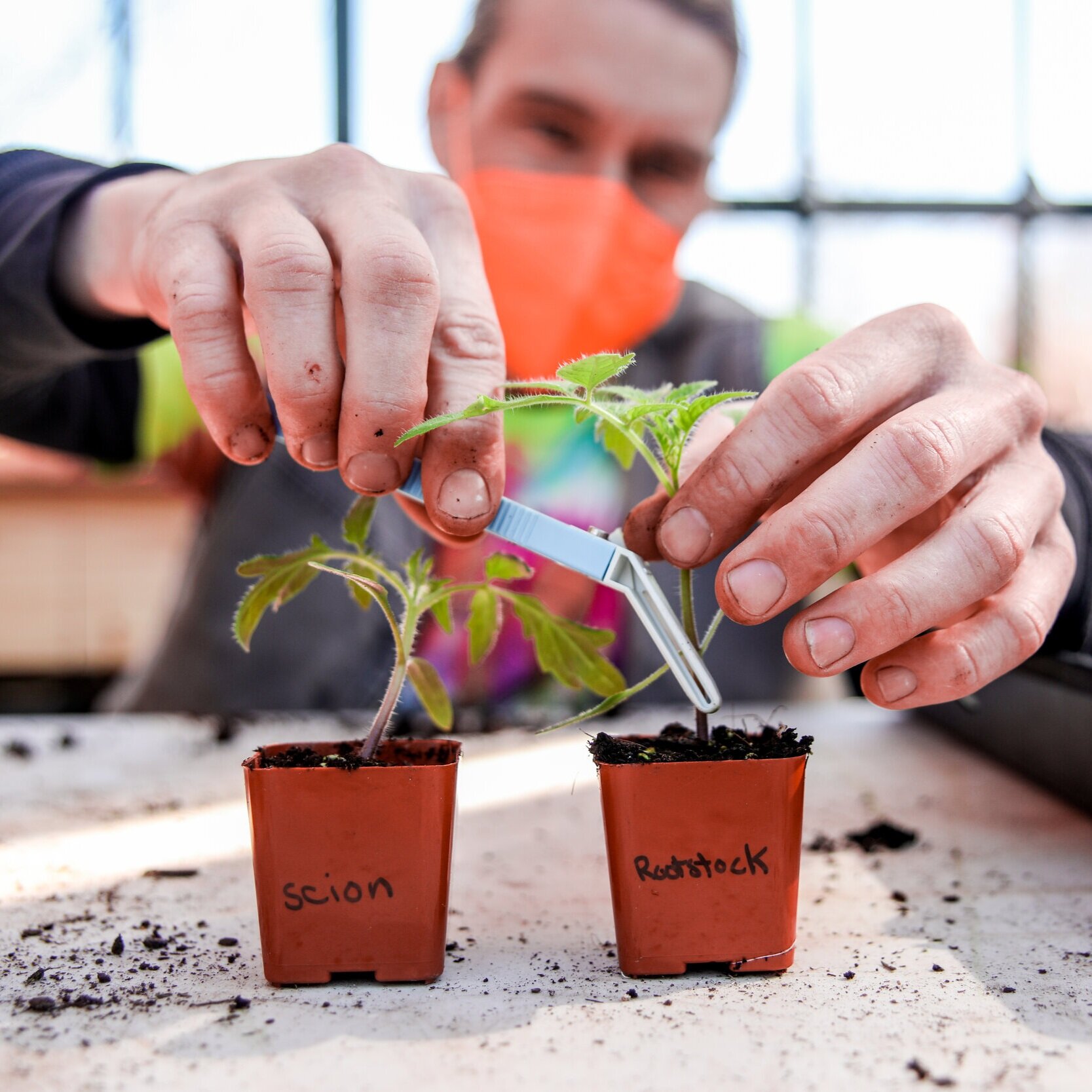
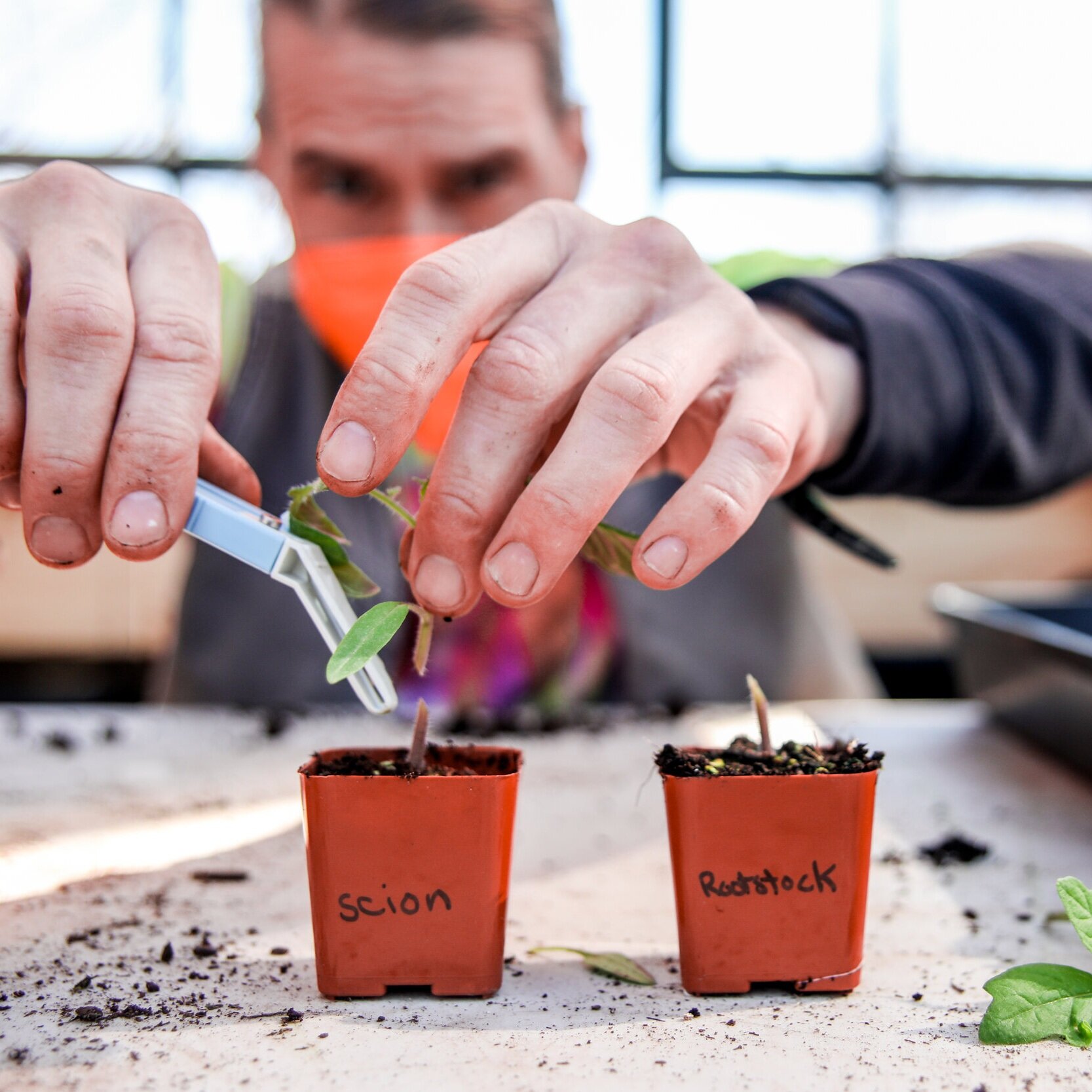
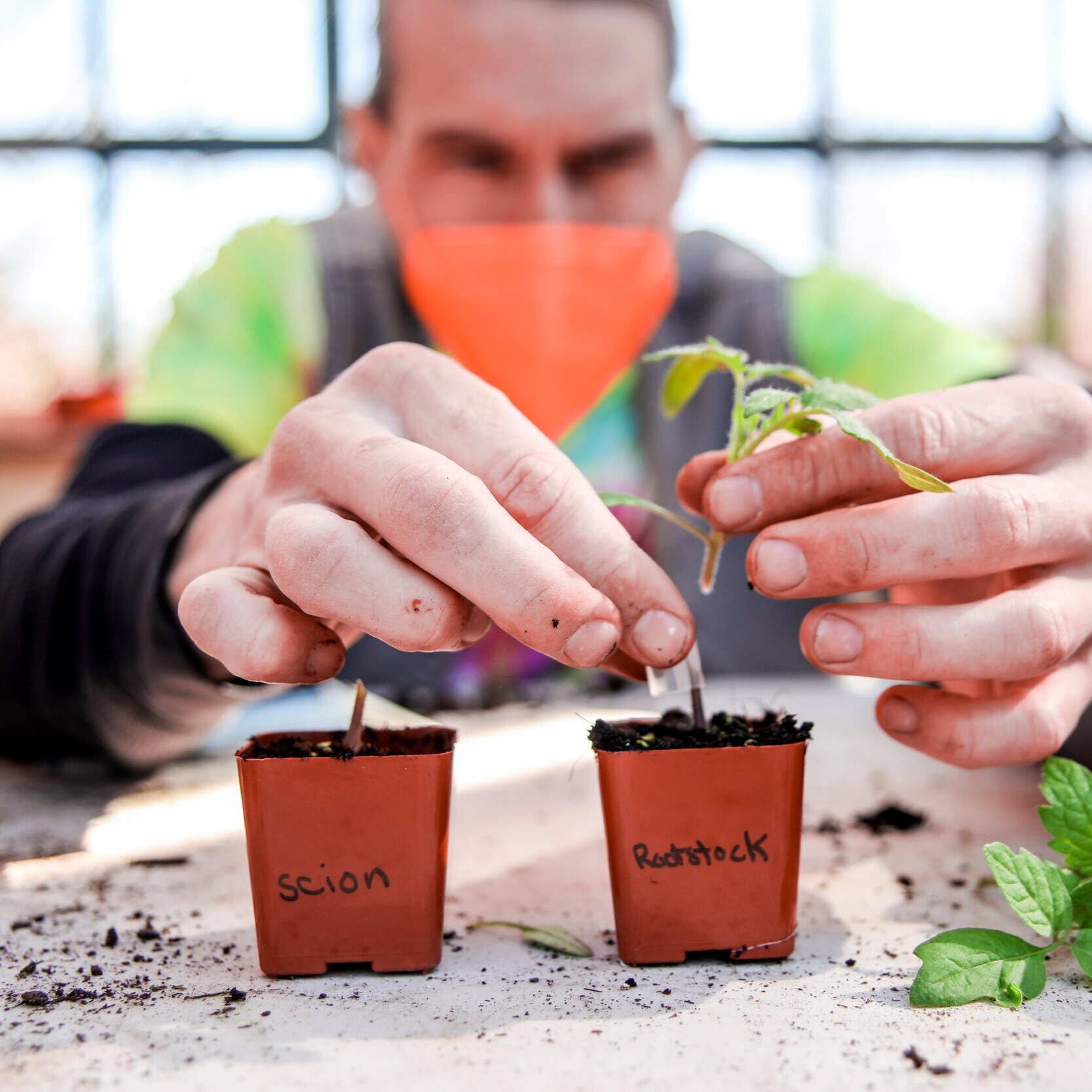
Step 1.
Using a fresh razor blade, make a clean 45-degree angle cut on your rootstock plant about an inch above the soil line. Compost the top portion – you won't need it.
Step 2.
Select a scion with a similar stem diameter (this is crucial!) and make a matching 45-degree angle cut.
Step 3.
Connect the two plants using a grafting clip, ensuring there's no gap between the cut surfaces. If needed, support any leaning plants with a small stick, straw, or toothpick.
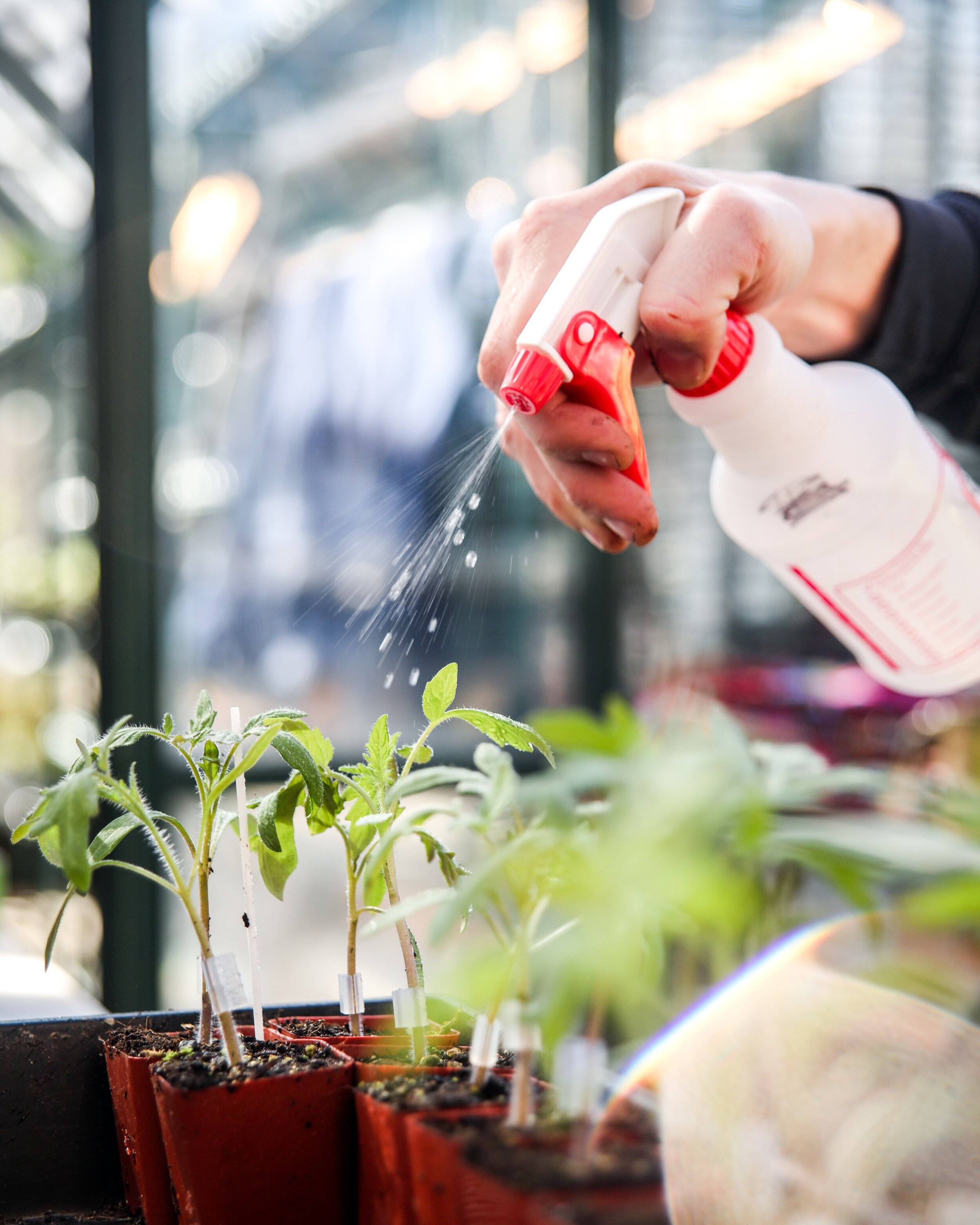
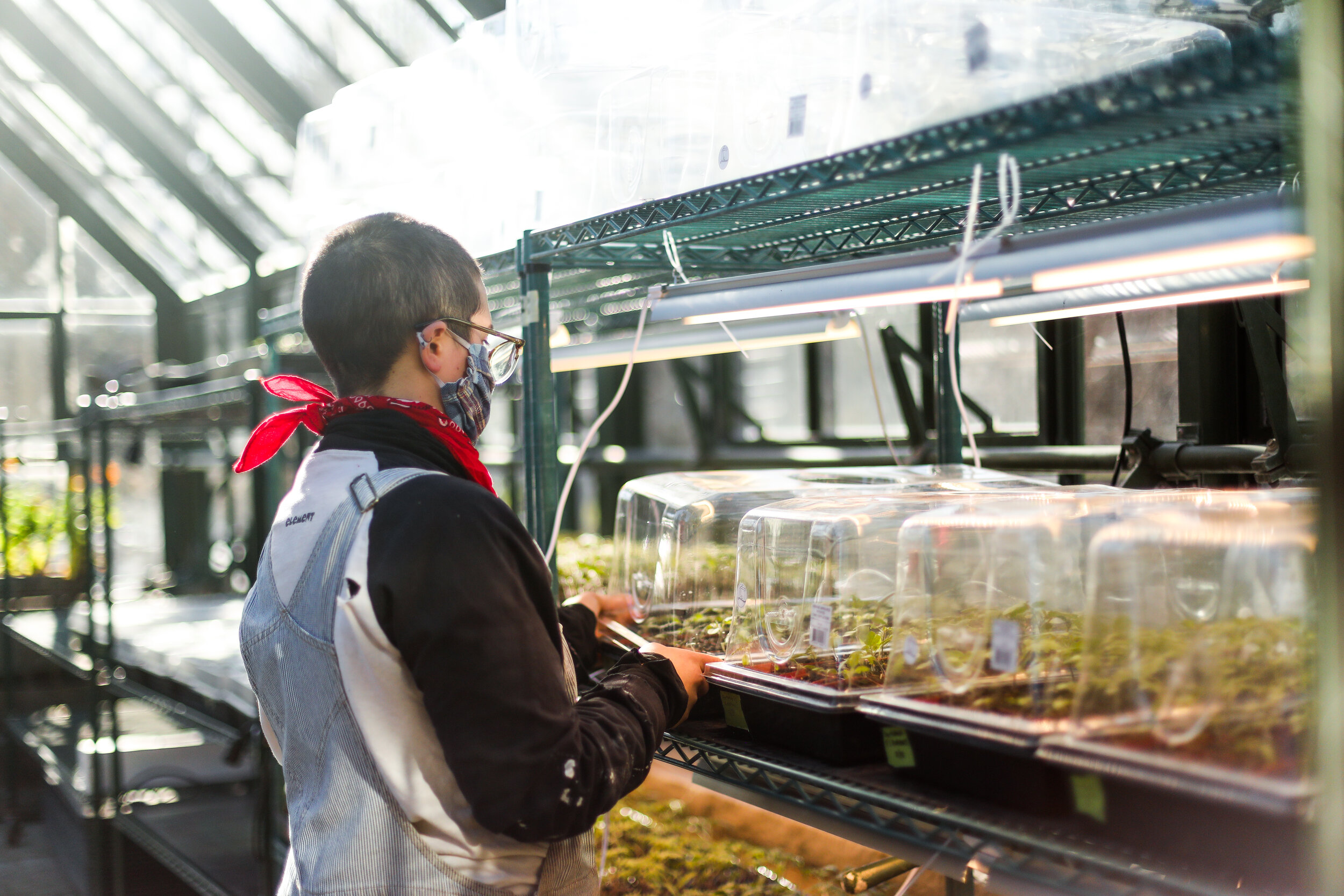
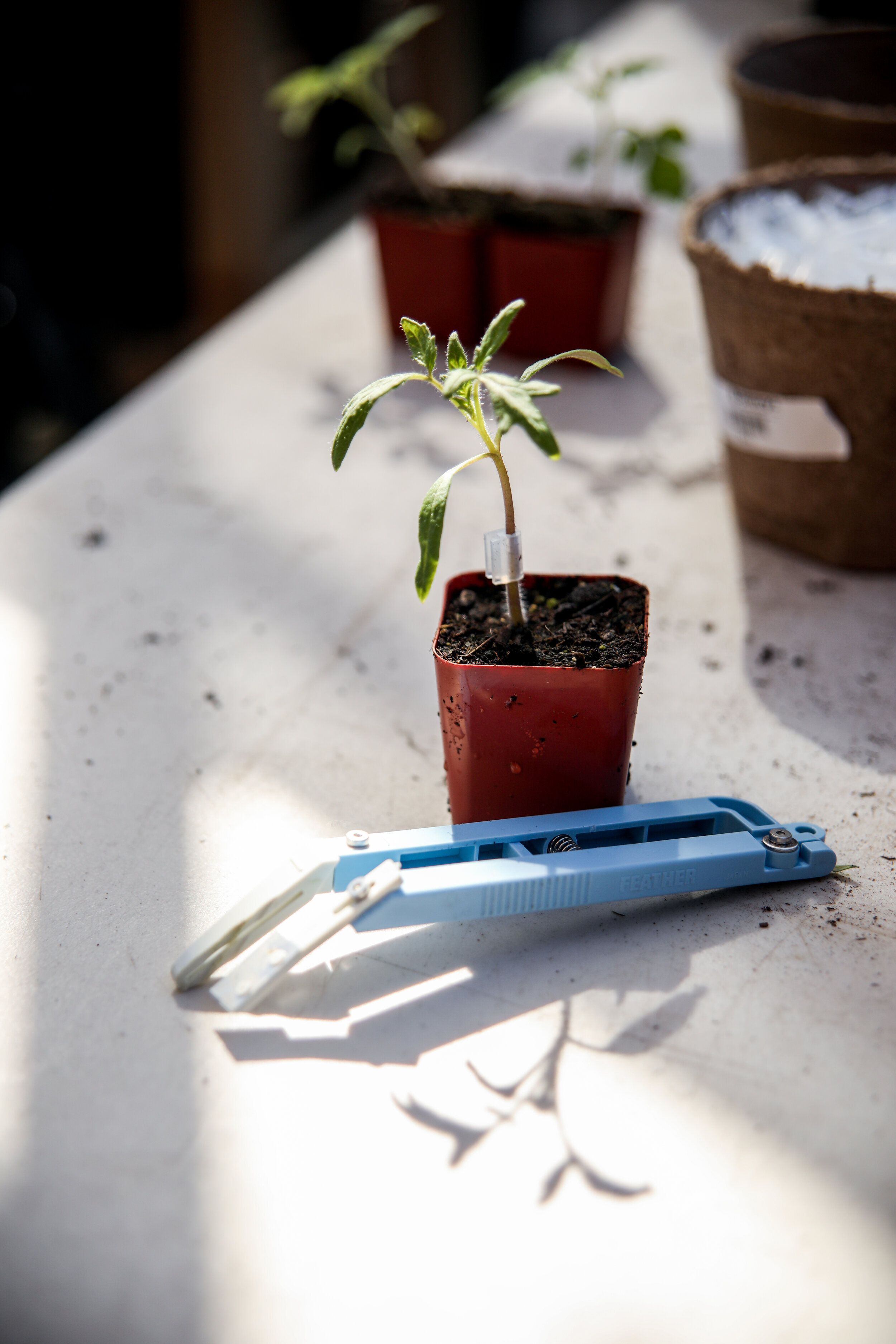
Step 4.
Spray plants with water to keep them cool Create a healing environment by spraying the plants with water and placing them in a humidity dome or covered container. Maintain temperatures between 75-80 degrees using a heating pad. Cover the dome with a dark cloth to pause photosynthesis – think of this as putting your plant in intensive care while it heals.
Step 5.
Monitor closely for the first two days, maintaining humidity through regular misting. If plants appear droopy after this period, provide additional moisture and healing time.
Step 6.
Around day four, begin gradually reintroducing light by partially uncovering the plants. After 4-5 days, you can fully uncover them while keeping the dome on for humidity. When the plants show strong healing, transition them to full sun exposure.
*Note: These timelines are guidelines – trust your grower's intuition to gauge when plants are ready for each transition.
White Feather Farm Insights
Our recent grafting project involved over 300 tomato plants completed in just two days, representing more than 70% of our tomato production. We're proud to report a 93% survival rate! We're conducting a side-by-side comparison between grafted and non-grafted plants to demonstrate the benefits.
Here's something fascinating – grafting isn't limited to same-species combinations. You can even graft cucumber scions onto tomato rootstock! It's a versatile technique that's been used for centuries to combine varieties and save struggling plants.
Pro Tips for Successful Grafting:
Ensure precise stem alignment
Secure clips firmly
Monitor plants vigilantly
And our secret ingredient: play good music while grafting – we swear it improves survival rates!
